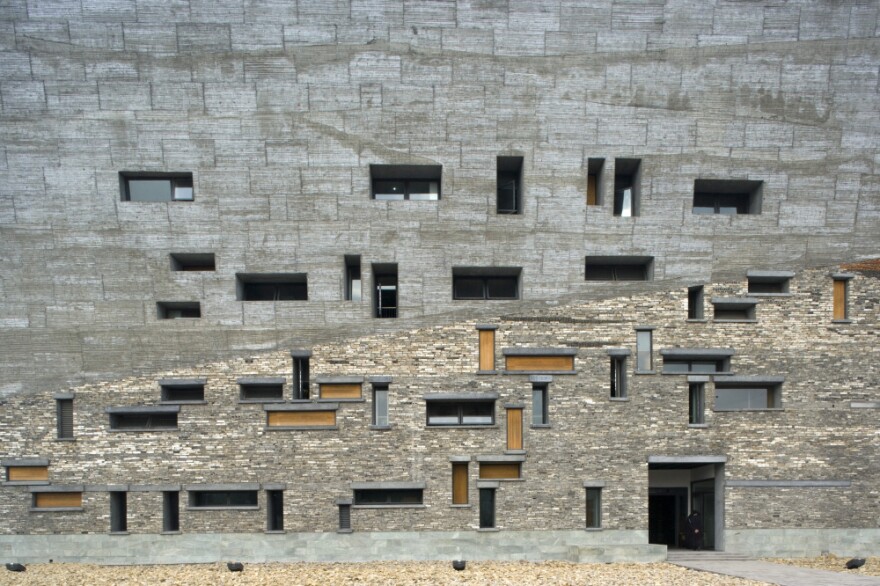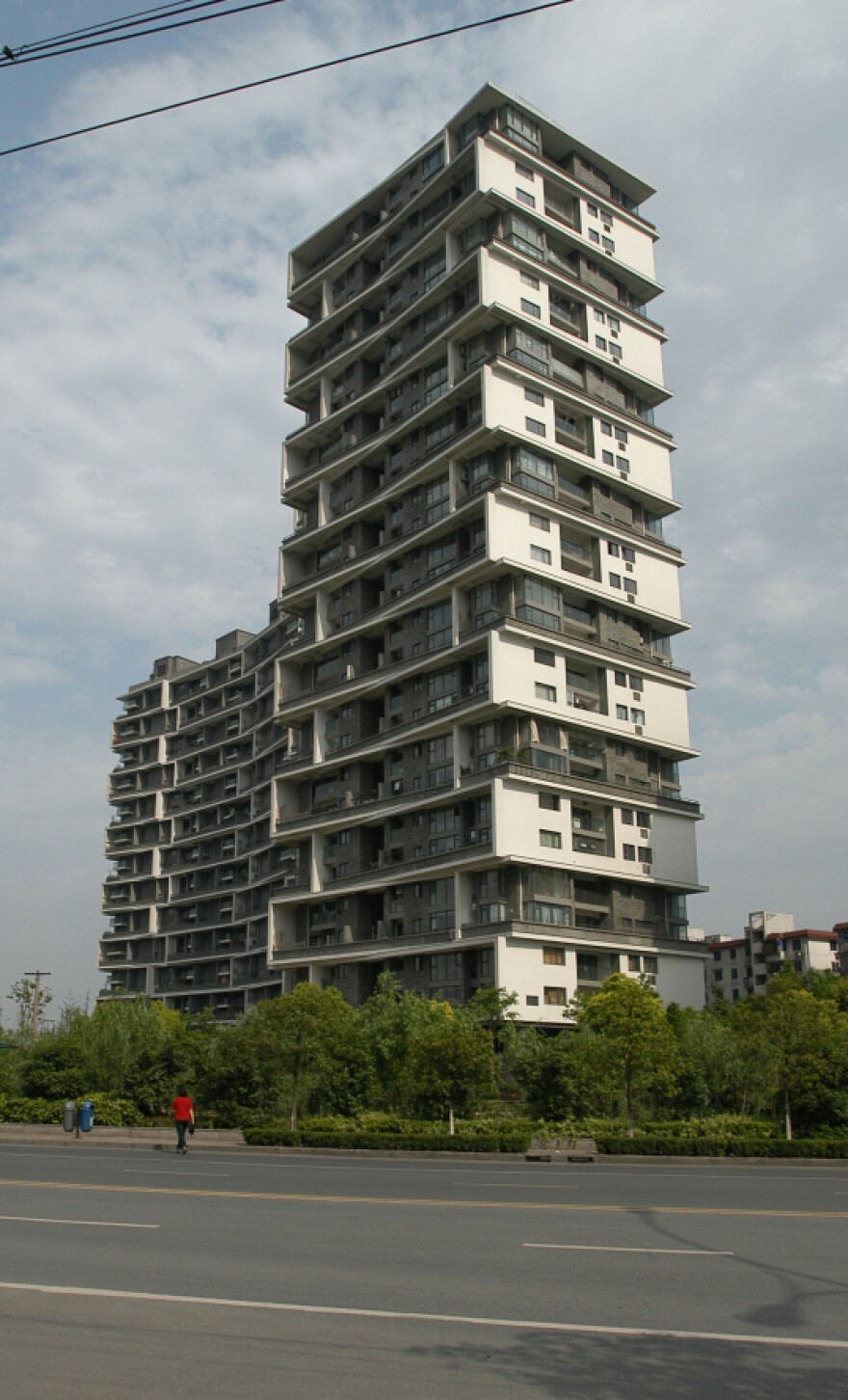
For the first time, the Pritzker Architecture Prize has been awarded to an architect based in China. Wang Shu, 49, is interested in preservation, working slowly and tradition — ideals that sometimes seem forgotten in today's booming China. Wang says in the 1990s he had to get away from China's architectural "system" of demolition, megastructures and get-rich-quick — so he spent the decade working with common craftspeople building simple constructions.
"I go out of system," Wang says, "Because, finally I think, this system is too strong."
Since then, Wang has designed museums, housing and many academic buildings including an art academy campus using tiles salvaged from demolished houses. All of his work is in China, but he expects that to change. The Pritzker jury says they are signaling the increasingly important role China will play in the development of architectural ideals.

'It Really Means Neighborhood'
Wang started drawing as a 2-year old boy in Beijing. He drew on everything — from books to the walls of his house in a crowded Beijing alley. At age 6 he moved back to his birthplace, Urumqi, more than 1,500 miles away. When he returned to Beijing four or five years later, the neighbors told him, "Your drawings are still on the walls; we preserved them."
The architect says that gave him a warm feeling inside. "It really means neighborhood," he says. "It means, the common people, they understand something about art and culture."
Wang says that experience taught him to place a lot of faith in people. It made him want to learn more of their wisdom, and to give back to them. So he went to architecture school in Nanjing, but he says the way they taught the profession made it impossible to be a good architect. He worked to save and renovate old buildings; this was the time when China was booming — millions of people were moving to cities and the government built housing, schools, hospitals, subways and office towers on a scale and pace never before seen. But in the 1990s Wang was not a part of it. He dropped out of sight and "disappeared," he says.

For the next 10 years he found building projects being erected by more traditional craftsman, and from 8 a.m. until midnight he'd see how they worked, how they put materials together, where they put windows. If the project took three months, he was there nearly every day for three months. When he wasn't there, he was studying anthropology, philosophy, movies and art history. In 1997, he and his wife founded Amateur Architecture Studio.
Handicraft is important, and Wang says he doesn't like "professionalized soulless architecture as practiced today." He says he works more like a traditional Chinese painter. When he accepts a commission, he studies the city, the valley and the mountains. Then he goes home and thinks about it for about a week, without drawing. He says he drinks tea every day to stay calm, so his architecture doesn't become too strong and overwhelm the landscape.

China's Architectural 'Sweet Spot'
Wang's design for the Ningbo History Museum came to him at 3 in the morning. He realized his job was to show people what their city used to look like. He took a pencil and drew it from start to finish. The modern design recalls an ancient Chinese fortress, layered with time's passage. It is richly spatial on the inside.
"If you look at his masonry work, it's working with very traditional materials — stone, brick — but using it in a radically different way," says Clifford Pearson, the deputy editor of Architectural Record. "Probably the best example of this is the Ningbo History Museum. It's this monumental museum, almost fortresslike. And on its exterior, it has almost a collage of masonry work that's really different from anything I've ever seen. It recalls fortresses, but done in a very modern way."

At Wang's Vertical housing towers, he has residents plant small trees special to them to differentiate their tower from others. He designed an art academy using more than 2 million tiles salvaged from demolished traditional houses. It's located in the city of Hangzhou, where Wang lives between a beautiful lake and mountains, famous for trails in the woods.
The Pritzker jury citation states:
The recent process of urbanization in China invites debate as to whether architecture should be anchored in tradition or should look only toward the future. As with any great architecture, Wang Shu's work is able to transcend that debate, producing an architecture that is timeless, deeply rooted in its context and yet universal.
Wang's wife is the only partner in his small firm. He says "without me, no design. Without her, it can't become reality." He hopes this prize influences younger Chinese architects to work within local contexts, slowly, on both large and small scales. He also hopes he can influence this generation of Chinese architects to realize that China must not demolish history to develop.
But change won't come soon enough for his beloved childhood home in Beijing — the one with the drawings that the neighbors preserved while he was away.
"But the pity thing is, our family house, this year will be demolished," Wang says. "... For the private people, you don't have the power to stop it."
Copyright 2020 NPR. To see more, visit https://www.npr.org. 9(MDAxNDQ2NDAxMDEyNzU2NzM2ODA3ZGI1ZA001))




